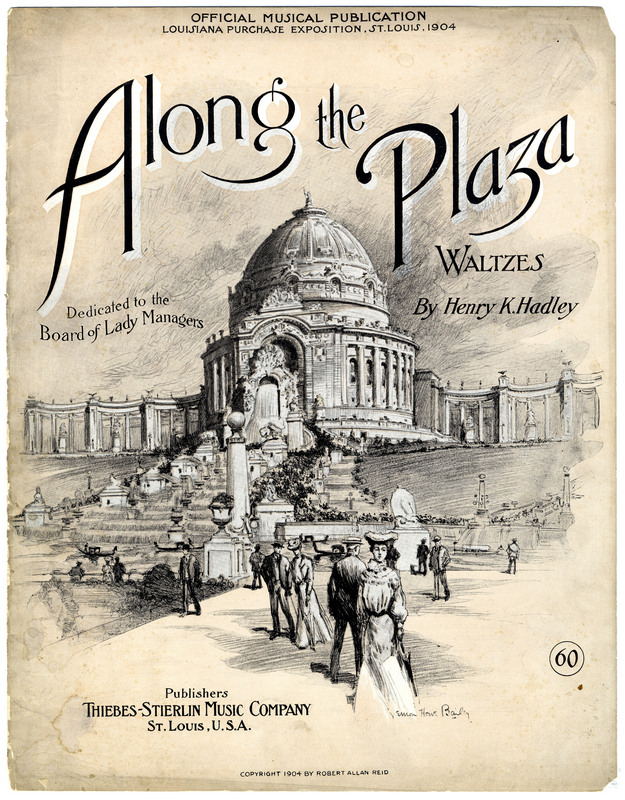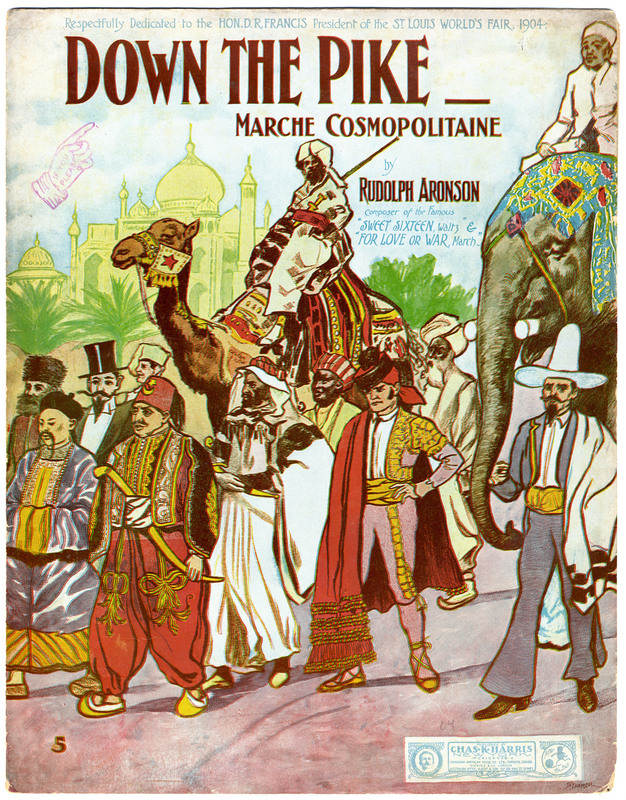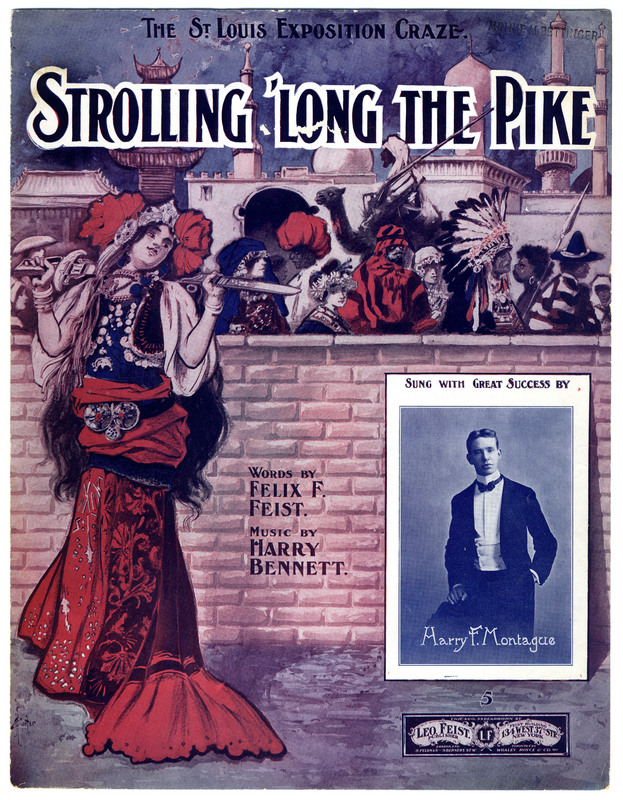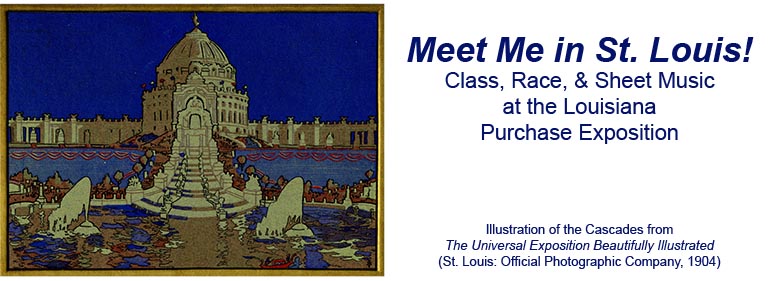Education and Entertainment
Exhibits covered the fairgrounds in present-day Forest Park. These displays celebrating various states, nations, arts, and industries formed the educational core of the fair.
Along the northern end of the Exposition (along the bottom left side of the map) was the Pike, an area dedicated to entertainment, rather than edification. Popular Pike features included circuses, displays of firefighting techniques, and water rides. Many of the Pike’s attractions were pop culture versions of the more serious national displays of the rest of the fair.

Click the image above for more details about this item;
click here to download a pdf of the score.
The cover to Henry Kimball Hadley’s (1871-1937) elite-light waltzes Along the Plaza (1904) illustrates the high ideals of the fair’s educational and artistic exhibits. Well-dressed white men and women promenade though vast, open streets. In the background rises the Festival Hall, a concert hall whose prize exhibit was an enormous 5-manual pipe organ, the largest of its day. An equally impressive artificial waterfall, the Cascades, splashes and flashes into the Grand Basin below. The landscape is elaborate, but also organized and immaculate.
Listen to an excerpt from Along the Plaza here.

Click the image above for more details about this item;
click here to download a pdf of the score.
Contrast the orderly illustration for Along the Plaza with the blazing colors and crowded scene of Rudolph Aronson’s popular march, Down the Pike (1904). Elephants, camels, and people in native dress from around the world parade past minarets and palm trees. The Pike, as illustrated here, is a sensual land of exotic escapism for its viewers.
Aronson (1856-1919) incorporates this exotic flair in his introductory theme. A minor-mode melody floats over steady drum-like chords. This drone-like accompaniment and the use of the natural minor mode were common 19th-century approximations of non-European musical styles. Cultural historians often refer to these kinds of colorful, surface-level references to other cultures as exoticism, or in cases of specifically Asian influence, orientalism.
Click here to experience the exotic elements of Down the Pike.

Click the image above for more details about this item;
click here to download a pdf of the score.
Exotic images also blossom on the cover of the Feist-Bennett song, Strolling 'Long the Pike. Bennett's music, however, is a waltz-song, without the faux-oriental touches of Down the Pike. Feist (1883-1936) drew on his New York City origins to create the song's lyrics. He compares the Pike to the Bowery (a Manhattan neighborhood famous in the 19th century for brothels, saloons, and music halls) and the amusement parks at Coney Island.
Stroll along with Strolling 'Long the Pike here.

![[merged map of Louisiana Purchase Exposition] [merged map of Louisiana Purchase Exposition]](http://omeka.wustl.edu/omeka/files/fullsize/b3ffd5891d61a65ecc98043d9ac0cb91.jpg)